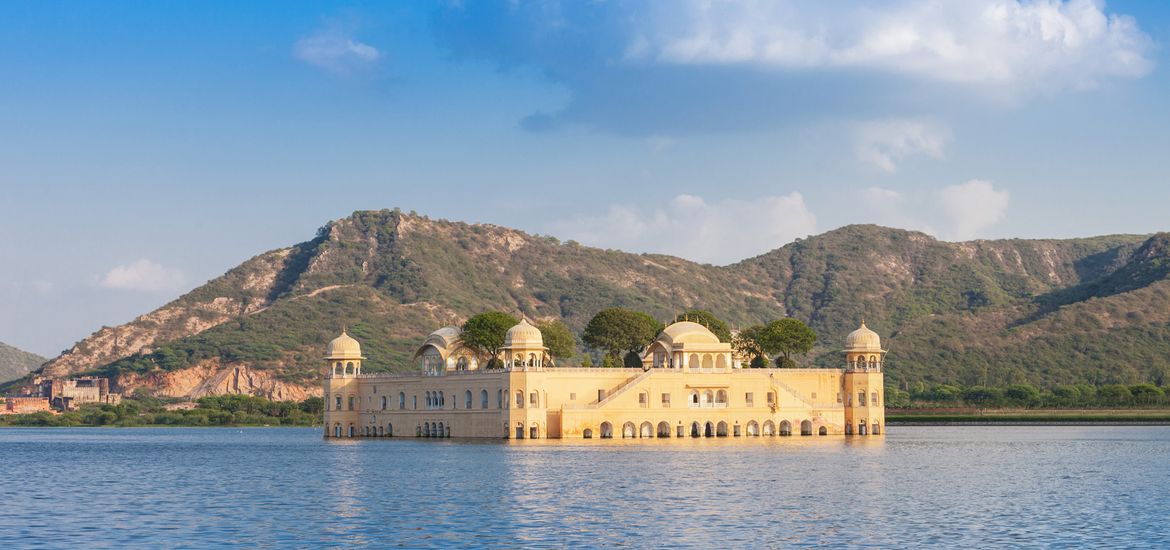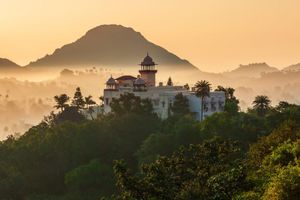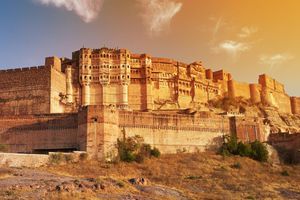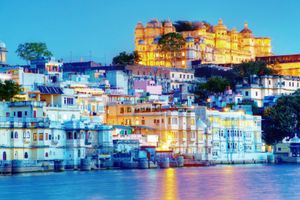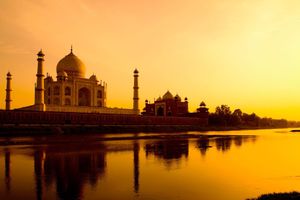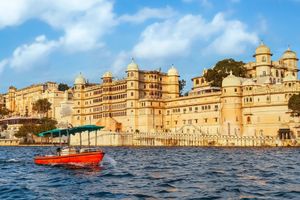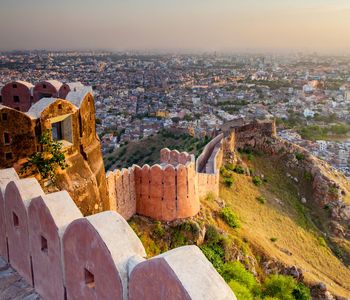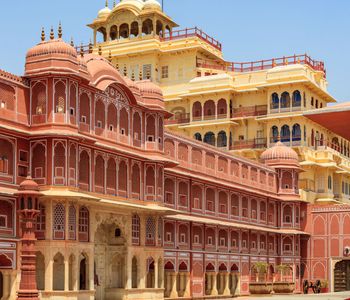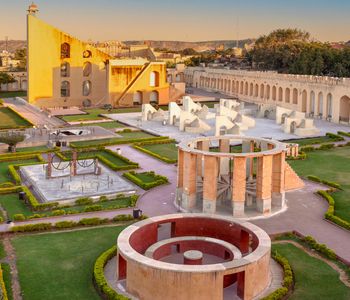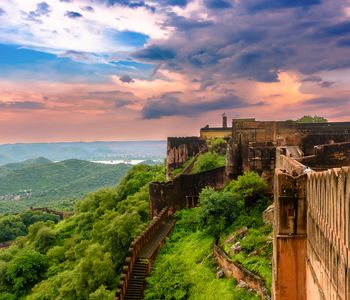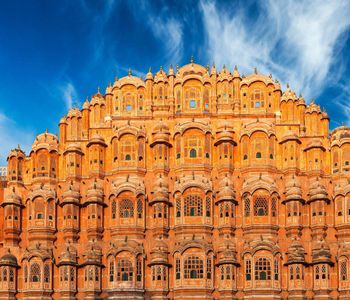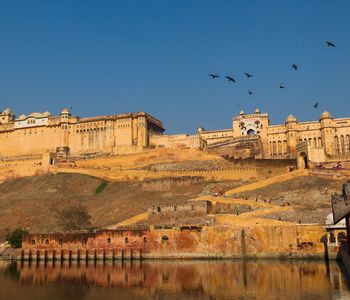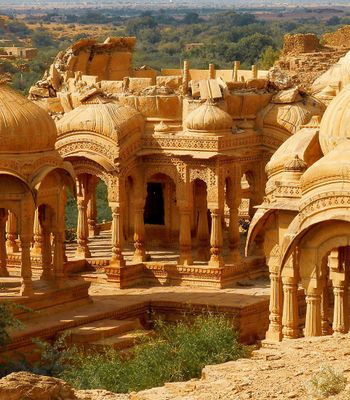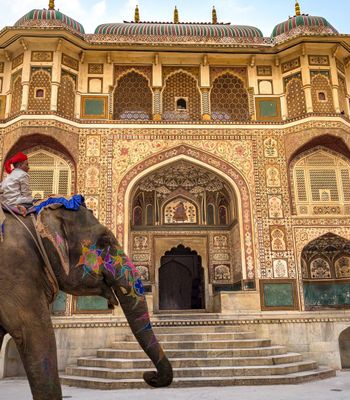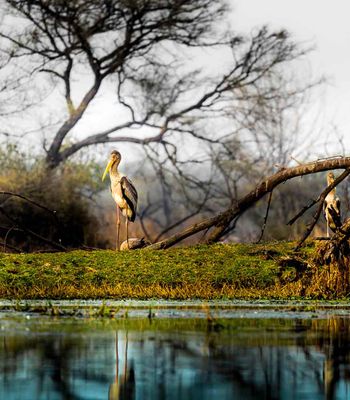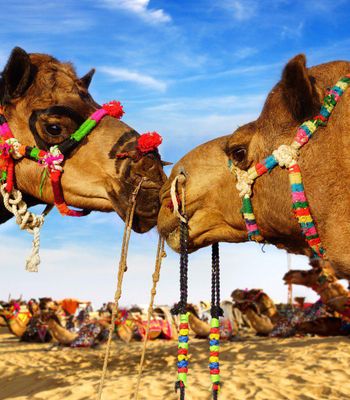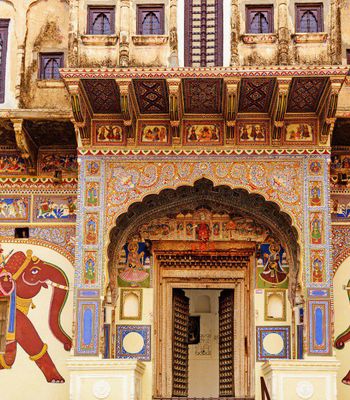In the heart of Man Sagar Lake, where the waters shimmer under Jaipur’s golden sun, stands the Jal Mahal, Jaipur’s fabled “Water Palace”. Half-submerged beneath the lake’s surface, only its uppermost floor is visible, while the rest remains hidden beneath the water.
The reflection of the palace in the water, coupled with the backdrop of the Aravalli hills, creates a picture-perfect scene. Visitors from all over the world come here not just to see a historical site but to experience a place that feels almost magical.
A Glimpse into the Past
The Jal Mahal was constructed in 1699 during the reign of Maharaja Madho Singh I. It wasn’t built as a residential palace but as a hunting lodge for the royal family.
Hunting was a favoured pastime for Rajput rulers, and Man Sagar Lake provided the perfect location for duck hunting and leisure retreats. Over the centuries, the palace witnessed periods of neglect before undergoing restoration to revive its splendour.
During the reign of Maharaja Sawai Pratap Singh, the palace was used for royal picnics, water sports, and even to host important guests. Today, Jal Mahal stands not just as a relic of regal pastimes but as a symbol of Jaipur’s rich heritage, captivating all who lay eyes on its floating illusion.
The Architectural Beauty of Jal Mahal
Jal Mahal is an exceptional example of Rajput and Mughal architectural styles. The palace, constructed from red sandstone, consists of five floors, four of which remain submerged when the lake is full.
Key architectural highlights include:
- Elegant Chhatris: Dome-shaped pavilions enhance the palace’s grandeur.
- Terrace Garden (Chameli Bagh): A beautifully landscaped space that once served as a leisure spot for the royals.
- Waterproof Lime Plastering: Designed to protect the palace from lake water damage.
Key Attractions and Hidden Gems of Jal Mahal
One of the best things about Jal Mahal is the breathtaking view, especially magical in the early morning or late afternoon when the sunlight makes the palace glow. Here are some key attractions and hidden gems that make a visit truly special:
Man Sagar Lake
Man Sagar Lake is home to various species of birds and other wildlife. Birdwatchers and nature lovers enjoy spending time by the lake, observing the different migratory and resident birds.
Gardens and Surrounding Areas
Around Jal Mahal, there are well-maintained pathways and small gardens. The terrace garden, Chameli Bagh, offers visitors a space to relax and enjoy with their flowering plants and neatly trimmed trees.
Photography Opportunities
Every angle of the palace is picture-perfect. From the way it seems to float on the water to the detailed carvings on its walls, there’s no shortage of amazing shots. The natural light and reflections on the water make it even more stunning.
Local Food & Handicraft Stalls
Near Jal Mahal, small stalls sell traditional Rajasthani snacks and handicrafts, especially during festive times. Visitors can enjoy local treats like pyaaz kachori and dal baati churma while admiring the palace from the lakeside.
Lesser Known Facts about Jal Mahal
Here are some lesser-known facts about Jal Mahal:
- It Wasn’t Always in Water: The lake surrounding Jal Mahal is man-made and was created much later. Originally, the palace stood on dry land.
- It Has No Living Quarters: Despite its grandeur, there are no designated rooms for living inside the palace. It was built purely for leisure.
- The Restoration Took 200 Years: After being neglected for centuries, the Jal Mahal was carefully restored in the early 2000s, bringing back its lost beauty.
- No One Can Visit the Palace: While it looks stunning from afar, entry inside Jal Mahal is restricted to the public. Only special permissions allow access.
- Its Water Levels Change with Seasons: The submerged floors of the palace appear and disappear depending on monsoons and seasonal water fluctuations.
When to Witness the Magic: The Best Time to Visit Jal Mahal
The ideal time to visit Jal Mahal is from October to March. The weather is cool and pleasant, with temperatures ranging from 10°C to 25°C, making it easier for visitors to explore easily without feeling exhausted. Visiting during the summer months can be challenging due to extreme heat.
In the morning, the rising sun displays a canopy of beautiful light, an absolute treat for the eyes, while in the late afternoon, the setting sun creates warm, golden reflections on the water. Both times are excellent for sightseeing and photography.
Journey to the Palace: How to Reach Jal Mahal
Getting to Jal Mahal is a breeze, no matter how you travel. Here’s a quick guide to help you find the best route:
By Air
The nearest airport is Jaipur International Airport (JAI), located approximately 16 kilometres away from the palace. The journey from the airport is usually smooth, and there are clear signages to guide you once you arrive in Jaipur. Taxis and cab services are readily available for a comfortable and quick ride to the palace.
By Train
Jaipur Junction (JP) is the main railway station, situated about 8.4 kilometres from the Jal Mahal. It connects several major cities, making it a convenient option for those travelling by train. From the station, you can easily find taxis, auto-rickshaws, or buses to reach the palace without much hassle.
By Road
Jaipur is well-connected by road to other cities in Rajasthan and neighbouring states. The palace is located on Amer Road, which is easily accessible from the city centre. If you're coming from the Jaipur city area, local transport options like taxis, auto-rickshaws, and buses are readily available to take you directly to the palace.
A cheap and easy way to travel around Jaipur, auto-rickshaws are quick and can easily get through traffic. For a more comfortable ride, taxis and ride-sharing services are available and easy to find. Checking local transport schedules and routes in advance can help you avoid any last-minute confusion.
A direct bus runs from Ajmeri Gate to Shahpura Bagh. From there, the Jal Mahal is only a 5-minute walk away. The total journey takes around 25 minutes.
As the evening light fades, the Jal Mahal stands quietly over the still waters of Man Sagar Lake, its reflection gently rippling on the surface. Though visitors can’t enter the palace, its charm is undeniable. For anyone visiting Jaipur, the Jal Mahal isn't just a monument but a moment in history, beautifully preserved and unforgettable in its simplicity.
